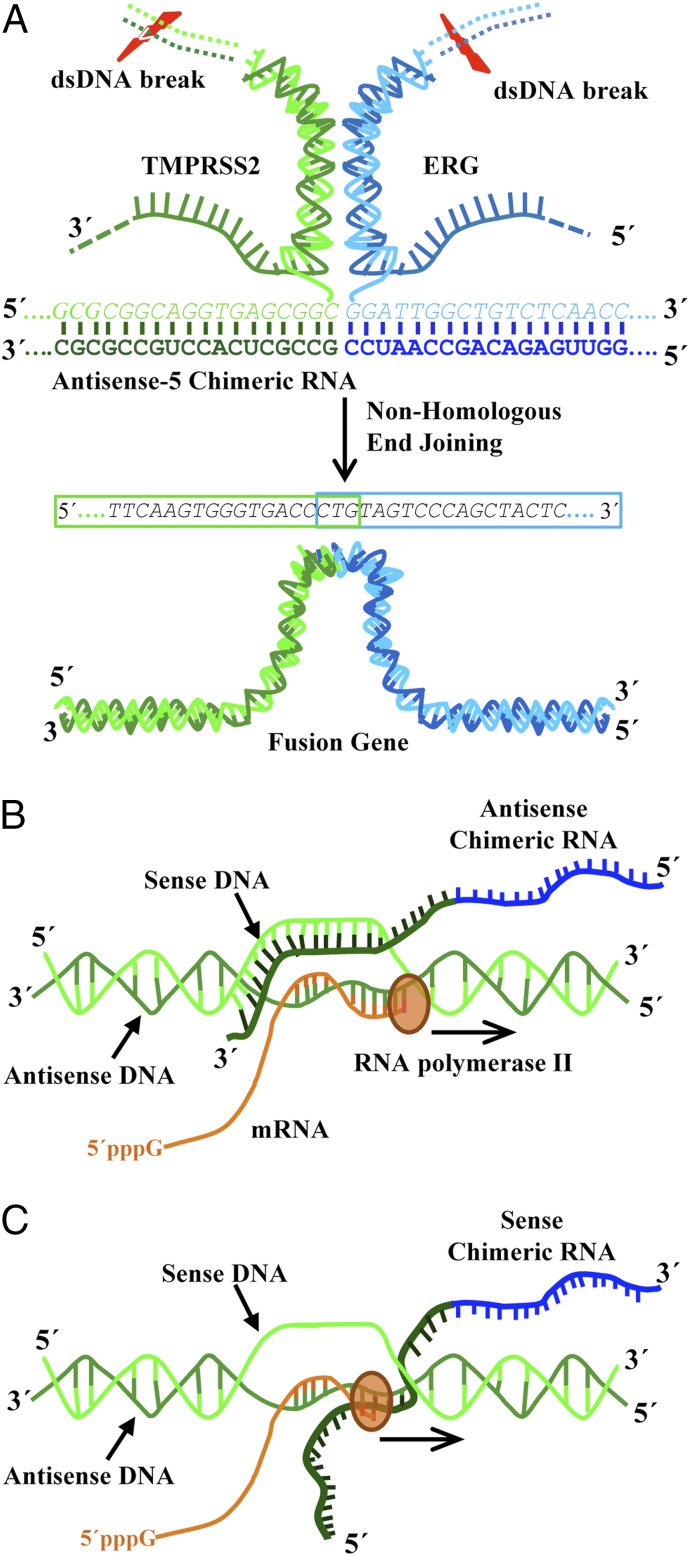Fig. 7.
A model of RNA-mediated gene fusion in mammalian cells. (A) Antisense-5 chimeric sequence invades chromosomal DNA of TMPRSS2 and ERG to stabilize a transient RNA/DNA hybrid reminiscent of an R-loop. Resolution of such an RNA/DNA hybrid by DNA break/repair mechanisms yields the final gene fusion through recombination in regions prone to DNA breaks. For simplicity, only part of the antisense-5 RNA sequence base-pairing with TMPRSS2 and ERG genes is shown. The three-way junction formation proposed in Fig. 2A is also omitted. (B and C) The disparity between antisense and sense chimeric RNA is explained by transcriptional conflict produced by the transcriptional activity of parental genes. (B) The antisense chimeric RNAs are able to form transiently stable DNA/RNA hybrids with sense strands of genomic DNA. (C) In contrast, the sense chimeric RNAs forming DNA/RNA hybrids with antisense strands of genomic DNA (the template strand used for transcription) are likely be “bumped” off by RNA polymerase and unable to stabilize the structures required for initiating genomic arrangements.

